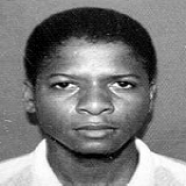Overview
Ahmed Khalfan Ghailani is a Tanzanian convicted for conspiracy in the August 1998 U.S. Embassy bombings in Kenya and Tanzania.Chris McGreal, “Guantánamo detainee Ahmed Khalfan Ghailani cleared of 284 terror charges,” Guardian (London), November 17, 2010, https://www.theguardian.com/world/2010/nov/18/guantanamo-detainee-ahmed-khalfan-ghailani. Ghailani assisted in the transport and acquisition of explosives and other materials used in the bombings. After the bombings, he spent time in Afghanistan working at an al-Qaeda training camp, serving as Osama bin Laden’s personal bodyguard and cook, and forging documents for al-Qaeda members. After his 2004 capture in Pakistan, Ghailani was transferred to U.S. custody and imprisoned at Guantanamo in 2006.“The Guantanamo Docket: Ahmed Khalfan Ghailani: JFT – GTMO Assessment,” New York Times, accessed December 1, 2017, https://www.nytimes.com/interactive/projects/guantanamo/detainees/10012-ahmed-khalfan-ghailani. In his 2010 federal trial, Ghailani was convicted of a single charge of conspiracy to destroy government buildings and property, but acquitted of 284 other charges, including multiple counts of murder.Chris McGreal, “Guantánamo detainee Ahmed Khalfan Ghailani cleared of 284 terror charges,” Guardian (London), November 17, 2010, https://www.theguardian.com/world/2010/nov/18/guantanamo-detainee-ahmed-khalfan-ghailani. He was sentenced to life in prison.Benjamin Weiser, “Ex-Detainee Gets Life Sentence in Embassy Blasts,” New York Times, January 25, 2011, http://www.nytimes.com/2011/01/26/nyregion/26ghailani.html; David Ariosto, “Guantanamo detainee sentenced to life in prison for Africa bombings,” CNN, January 25, 2011, http://www.cnn.com/2011/CRIME/01/25/new.york.guantanamo.sentencing/index.html.
Originally from the island of Zanzibar in Tanzania, Ghailani dropped out of school in 1996. He then moved to Dar es Salaam and worked as a courier, transporting goods within Tanzania and abroad including to Kenya and the United Arab Emirates. Around the end of 1997 or the beginning of 1998, Ghailani traveled to Arusha, Tanzania, to pick up soap to transport back to Dar es Salaam. When he arrived, al-Qaeda leader Usama al-Kini told him that the packages were not of soap but of TNT. Ghailani made multiple trips to transport the explosives to Dar es Salaam and Mombasa, Kenya. The explosives were used in the August 1998 U.S. Embassy bombings.“The Guantanamo Docket: Ahmed Khalfan Ghailani: JFT – GTMO Assessment,” New York Times, accessed December 1, 2017, https://www.nytimes.com/interactive/projects/guantanamo/detainees/10012-ahmed-khalfan-ghailani.
On August 6, 1998––the day before the U.S. Embassy bombings––Ghailani left Kenya to travel to Afghanistan via Pakistan. Before he left, he helped to obtain additional materials used in the bombings, including gas cylinders and a vehicle. He was also reportedly present when al-Qaeda member Abd al-Rahman al-Muhajir asked to see the U.S. Embassy in Dar es Salaam. Ghailani later stated that by the time of his departure, he had deduced that there would be a suicide truck bomb attack against the U.S. Embassy in Dar es Salaam.“The Guantanamo Docket: Ahmed Khalfan Ghailani: JFT – GTMO Assessment,” New York Times, accessed December 1, 2017, https://www.nytimes.com/interactive/projects/guantanamo/detainees/10012-ahmed-khalfan-ghailani. On August 7, two nearly simultaneous vehicle bombs detonated at the U.S. Embassies in Nairobi, Kenya, and Dar es Salaam, killing 224 people and wounding more than 5,000 others in an attack claimed by al-Qaeda.“1998 US Embassies in Africa Bombings Fast Facts,” CNN, August 9, 2017, http://www.cnn.com/2013/10/06/world/africa/africa-embassy-bombings-fast-facts/index.html. On December 16, 1998, a federal court in New York indicted Ghailani for conspiracy in the bombings.“Accused East Africa Embassy Bomber Held at Guantanamo Bay To Be Prosecuted in U.S. Federal Court,” U.S. Department of Justice, May 21, 2009, https://www.justice.gov/archive/usao/nys/pressreleases/May09/ghailaniprosecutionpr.pdf.
Ghailani spent five months from late 1998 to early 1999 undergoing military training at the al-Faruq militant camp in Afghanistan. After he was sent into combat on the front lines in Kabul for a year, he returned to al-Faruq and worked as an instructor there for three or four months, teaching basic training skills such as use of light weaponry and explosives. He then moved to Kandahar, where he served as a bodyguard and personal cook for Osama bin Laden until 2001. Later that year, Ghailani received training in document forgery. Until 2004, he worked in Pakistan with senior al-Qaeda members including Khalid Sheikh Mohammed and Ammar al-Baluchi arranging travel and forging documents for jihadists returning from Afghanistan to their home countries.“The Guantanamo Docket: Ahmed Khalfan Ghailani: JFT – GTMO Assessment,” New York Times, accessed December 1, 2017, https://www.nytimes.com/interactive/projects/guantanamo/detainees/10012-ahmed-khalfan-ghailani.
In October 2001, Ghailani was designated as a terrorist by the United States and United Nations, and listed as number eight on the FBI’s “Most Wanted Terrorists” list.“‘Most wanted terrorists’ list released,” CNN, October 10, 2001, http://www.cnn.com/2001/US/10/10/inv.mostwanted.list/; “Recent OFAC Actions,” U.S. Department of the Treasury, October 12, 2001, https://www.treasury.gov/resource-center/sanctions/OFAC-Enforcement/Pages/20011012.aspx; “Security Council Al-Qaida and Taliban Sanctions Committee Adds Names of Two Individuals to Its Consolidated List,” United Nations Security Council, October 21, 2010, http://www.un.org/press/en/2010/sc10066.doc.htm. On July 24, 2004, Ghailani was captured after a 14-hour gun battle with Pakistani authorities.“The Guantanamo Docket: Ahmed Khalfan Ghailani: JFT – GTMO Assessment,” New York Times, accessed December 1, 2017, https://www.nytimes.com/interactive/projects/guantanamo/detainees/10012-ahmed-khalfan-ghailani; Benjamin Weiser, “Ex-Detainee Gets Life Sentence in Embassy Blasts,” New York Times, January 25, 2011, http://www.nytimes.com/2011/01/26/nyregion/26ghailani.html. The following month, he handed over to U.S. custody. Upon his capture, he was found to be in possession of jihadist propaganda materials and software applications such as Photoshop that he used to forge documents.“The Guantanamo Docket: Ahmed Khalfan Ghailani: JFT – GTMO Assessment,” New York Times, accessed December 1, 2017, https://www.nytimes.com/interactive/projects/guantanamo/detainees/10012-ahmed-khalfan-ghailani. Ghailani was held and interrogated at CIA black sites for two years before he was transferred to custody at Guantanamo on September 4, 2006.Benjamin Weiser, “Secret C.I.A. Jails an Issue in Terror Case,” New York Times, July 1, 2009, http://www.nytimes.com/2009/07/02/nyregion/02detainee.html; “The Guantanamo Docket: Ahmed Khalfan Ghailani: JFT – GTMO Assessment,” New York Times, accessed December 1, 2017, https://www.nytimes.com/interactive/projects/guantanamo/detainees/10012-ahmed-khalfan-ghailani.
In a March 2007 hearing, Ghailani admitted that he delivered explosives, but claimed that he did not have prior knowledge of the attacks. He also apologized to the U.S. government and families of the victims. In June 2009, Ghailani was transferred to New York to face trial in federal court. He pled not guilty to charges of involvement in the 1998 U.S. Embassy bombings, which totaled to 286.“Guantanamo detainee denies guilt,” BBC News, June 9, 2009, http://news.bbc.co.uk/2/hi/americas/8091013.stm. Ghailani’s trial began on October 12, 2010.Basil Katz, “First Guantanamo detainee criminal trial begins in NY,” Reuters, October 12, 2010, https://www.reuters.com/article/us-security-guantanamo-ghailani/first-guantanamo-detainee-criminal-trial-begins-in-ny-idUSTRE69B6IO20101012.
On November 17, 2010, Ghailani was convicted of a single charge of conspiracy to destroy government buildings and property. He was acquitted of 284 other charges, including many more serious murder and conspiracy charges.Chris McGreal, “Guantánamo detainee Ahmed Khalfan Ghailani cleared of 284 terror charges,” Guardian (London), November 17, 2010, https://www.theguardian.com/world/2010/nov/18/guantanamo-detainee-ahmed-khalfan-ghailani. On January 25, 2011, he was sentenced to life in prison.Benjamin Weiser, “Ex-Detainee Gets Life Sentence in Embassy Blasts,” New York Times, January 25, 2011, http://www.nytimes.com/2011/01/26/nyregion/26ghailani.html; David Ariosto, “Guantanamo detainee sentenced to life in prison for Africa bombings,” CNN, January 25, 2011, http://www.cnn.com/2011/CRIME/01/25/new.york.guantanamo.sentencing/index.html. He was transferred to the nation’s highest security prison––the Supermax prison in Florence, Colorado––to carry out his sentence.Benjamin Weiser, “Heightened Security for a Former Detainee,” New York Times, June 9, 2011, http://www.nytimes.com/2011/06/10/nyregion/ghailani-ex-guantanamo-detainee-is-moved-to-supermax.html.
Associated Groups
- Extremist entity
- Al-Qaeda
- Read Threat Report
- Type(s) of Organization:
- Non-state actor, religious, terrorist, transnational, violent
- Ideologies and Affiliations:
- Jihadist, pan-Islamist, Qutbist, Salafist, Sunni, takfiri
- Position(s):
- Facilitator of 1998 East Africa U.S. Embassy bombings
Al-Qaeda’s 9/11 attacks was the deadliest ever on American soil, killing nearly 3,000 people. Since the fall of the Taliban, al-Qaeda has established operations worldwide, including in Syria, the Gulf, North Africa, West Africa, East Africa, and the Indian subcontinent.
History
United States

The U.S. Department of the Treasury designated “Ahmed Khafan Ghailani” as a Specially Designated Global Terrorist pursuant to Executive Order (E.O.) 13224 on October 12, 2001.“Recent OFAC Actions,” U.S. Department of the Treasury, October 12, 2001, https://www.treasury.gov/resource-center/sanctions/OFAC-Enforcement/Pages/20011012.aspx.
United Nations

The United Nations Security Council added “Ahmed Khalfan Ghailani” to its Al-Qaida Sanctions List on October 17, 2001.“Security Council Al-Qaida and Taliban Sanctions Committee Adds Names of Two Individuals to Its Consolidated List,” United Nations Security Council, October 21, 2010, http://www.un.org/press/en/2010/sc10066.doc.htm.
